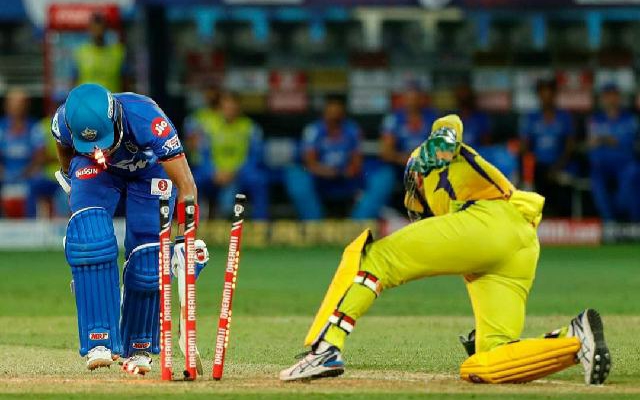IPL 2020: Why Prithvi Shaw's dismissal against CSK was adjudged stumping instead of run-out
As the ball touched Shaw's bat and pad before going behind, a lot of fans thought that it should be a run-out.
2 Min Read


Delhi Capitals (DC) had an amazing outing against Chennai Super Kings (CSK) in their second match. It was a convincing victory for them but CSK have now lost two matches in a row. Delhi’s batsmen laid a solid foundation against CSK and they looked in excellent control of their innings. MS Dhoni, one of the most celebrated captains of IPL, wasn’t as effective as a skipper as he has been in past.
However, his performance behind the wickets was extremely appreciated and he was involved in two important dismissals. The way he stumped Prithvi Shaw showed his excellent fitness levels even at the age of 39.
However, a lot of people are wondering whether the dismissal was adjudged correctly or not, as it could have been a run-out as well. So we decided to do quick operation on whether it was correct or not.
What exactly led to Prithvi Shaw’s dismissal
Prithvi Shaw was facing Piyush Chawla in the 13th over of Delhi’s innings. He walked down the pitch to play the ball on the full and missed the line, the ball took the inside edge of his willow, touched the pad and went behind. As he was still outside the crease, MS Dhoni lunged forward, grabbed the ball and disturbed the bails before he could get back, a bit different from a usual stumping.
As the ball touched Shaw’s bat and pad before going behind, a lot of fans thought that it should be a run-out. What we usually see in stumpings is that batsman goes outside the crease, misses the ball and keeper disturbs the wickets, which wasn’t the case this time. Then the question comes whether the decision was correct or not?
The actual rule
As per the rules set by the MCC, the rules defining body of cricket, such dismissal is called stumping itself. The rule read, “He/she has not attempted a run when his/her wicket is fairly put down by the wicketkeeper without the intervention of another fielder.”
Thus, if Shaw would have tried to steal a run after the ball went on the ground and Dhoni would have disturbed the wickets in a similar fashion, it would have been given run-out. But the rule suggests that if the batsman hasn’t attempted a run, he has to be given stumped. Hence, it is proved that it was a correct decision.
Download Our App